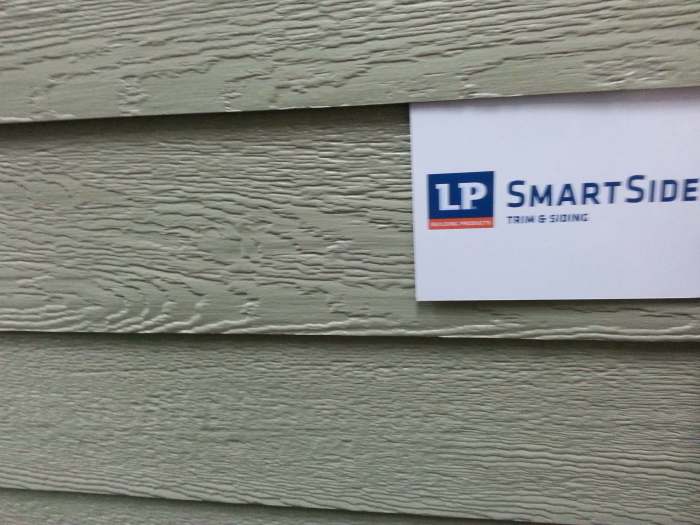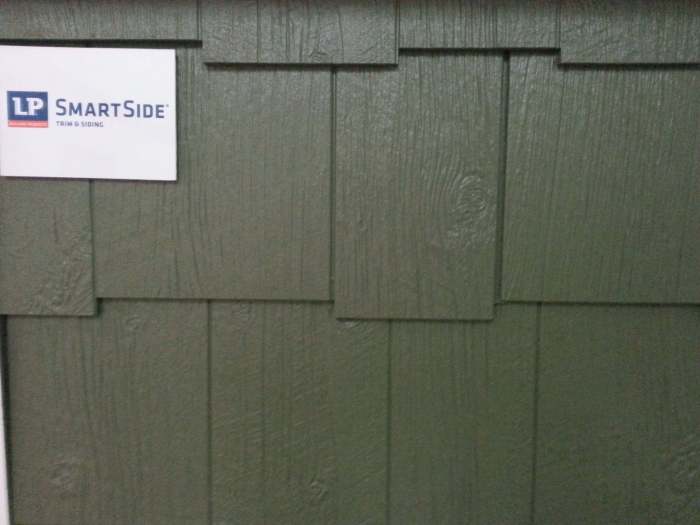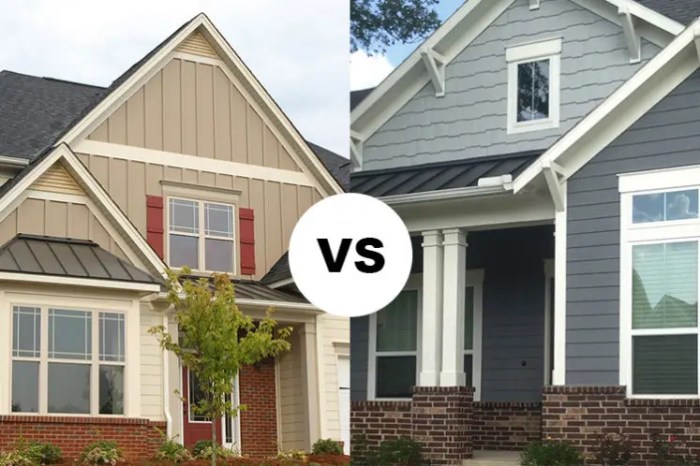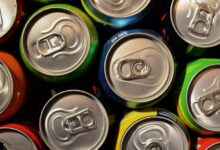LP SmartSide vs Hardie board A Comprehensive Comparison
LP SmartSide vs Hardie board presents an intriguing comparison of two popular siding materials that have gained significant attention in the construction industry. Understanding the unique attributes of each option allows homeowners and builders to make informed choices tailored to their specific needs and aesthetic preferences.
LP SmartSide, known for its engineered wood composition, offers a versatile range of design options, while Hardie Board, made from fiber cement, boasts remarkable durability and resistance to a variety of environmental factors. Both materials have their unique manufacturing processes and benefits, making them worthy contenders for any residential project.
Overview of LP SmartSide and Hardie Board
LP SmartSide and Hardie Board are two prominent siding materials that provide durability and aesthetic appeal to residential and commercial buildings. Understanding their composition and manufacturing processes is essential for making informed decisions regarding siding choices. This comparison highlights key features and benefits, enabling homeowners and builders to select the most suitable option for their needs.
Composition and Manufacturing Process of LP SmartSide
LP SmartSide is primarily composed of engineered wood strands that undergo a unique manufacturing process. This process begins with the selection of high-quality wood fibers, which are then treated with a proprietary blend of resins and waxes. These components are combined and compressed under high heat and pressure, resulting in a durable and moisture-resistant product. The final step involves applying a protective finishing coat that enhances the material’s weather resistance and visual appeal.
Composition and Manufacturing Process of Hardie Board
Hardie Board, also known as James Hardie siding, is made from a proprietary blend of cement, sand, and cellulose fibers, creating a fiber cement product renowned for its strength. The manufacturing process includes mixing these materials to form a slurry, which is then molded and cured in a controlled environment. This curing process enhances the material’s durability and resistance to various environmental factors such as moisture, fire, and pests.
Hardie Board is typically finished with a baked-on color coat, offering a long-lasting and vibrant appearance.
Key Features and Benefits Comparison
The comparison of LP SmartSide and Hardie Board reveals several key features and benefits that can influence a homeowner’s or builder’s choice. Each material offers unique advantages based on performance, aesthetics, and maintenance requirements. Below are important points to consider when evaluating these siding options.
- Durability: Both materials are designed to withstand harsh weather conditions; however, Hardie Board has a stronger reputation for resisting moisture and fire damage due to its fiber cement composition.
- Maintenance: LP SmartSide generally requires less maintenance compared to traditional wood siding and is resistant to peeling and chipping. Hardie Board, while highly durable, may require periodic repainting depending on exposure to the elements.
- Installation: LP SmartSide is lighter than Hardie Board, making it easier to handle and install, which can reduce labor costs. Hardie Board’s installation may be slightly more labor-intensive due to its weight.
- Aesthetic Variety: Both options come in a range of styles and colors; LP SmartSide offers a wood-like appearance, while Hardie Board provides an extensive palette of colors and textures, including a more traditional look.
- Cost: LP SmartSide typically has a lower initial cost compared to Hardie Board, making it an attractive option for budget-conscious projects. However, the overall value should consider longevity and maintenance costs.
Durability and Maintenance

LP SmartSide and Hardie Board both offer commendable durability and require specific maintenance practices that can significantly affect their longevity. Understanding the resilience of these materials against weather conditions, their maintenance needs, and their resistance to pests and rot is essential for homeowners considering siding options.
Durability of LP SmartSide
LP SmartSide is engineered to withstand various weather conditions, demonstrating impressive resilience against elements such as moisture, hail, and extreme temperatures. This material undergoes a process of precision manufacturing, which includes a treatment that enhances its durability. In regions prone to severe weather, LP SmartSide has been shown to resist cracking, warping, and swelling better than traditional wood siding. Its engineered wood composition provides added strength, making it less susceptible to physical damage during storms or high winds.
LP SmartSide is also treated with a proprietary technology to offer protection against fungal decay and insect damage, ensuring long-term performance. This durability is critical for homeowners who seek a reliable siding option that can last for decades with minimal impact from environmental factors.
Maintenance Requirements for Hardie Board
Hardie Board, known for its fiber cement composition, offers exceptional durability but does require regular maintenance to preserve its aesthetic and functional qualities. One of the primary maintenance tasks involves painting or staining approximately every 5 to 10 years, depending on the climate and color retention preferences. This maintenance is essential to prevent fading and to protect the board from moisture infiltration and paint peeling.Additionally, maintaining a clean exterior is vital for Hardie Board.
Regular washing and inspection for any signs of mold or mildew buildup can help prevent deterioration. Ensuring that gutters and downspouts are functioning correctly also contributes to the longevity of the siding by directing water away from the house, minimizing the risk of damage.
Resistance to Pests and Rot
Both LP SmartSide and Hardie Board are designed with resistance to pests and rot, yet they utilize different materials and treatments to achieve this.
- LP SmartSide: The material is treated with a zinc borate solution during manufacturing, which not only protects against fungal decay but also deters pests such as termites. This treatment is a significant advantage in regions where pest infestations are a common concern.
- Hardie Board: Made from fiber cement, Hardie Board is inherently resistant to pests due to its solid composition. Unlike wood, it does not provide a viable food source for termites or other wood-boring insects. However, while it is rot-resistant, improper installation or maintenance can lead to moisture retention, resulting in potential issues over time.
In summary, both LP SmartSide and Hardie Board offer durability and pest resistance, but their maintenance needs differ. LP SmartSide requires less frequent upkeep compared to Hardie Board, making it a more convenient choice for some homeowners.
Aesthetic Appeal: LP SmartSide Vs Hardie Board
The aesthetic appeal of a home plays a crucial role in its overall value and visual impact. When considering siding materials, both LP SmartSide and Hardie Board offer unique design options that can significantly enhance the appearance of a residence. The choice of siding can influence not only the architectural style but also the neighborhood’s character, making it essential for homeowners to select a product that complements their vision.LP SmartSide presents a wide array of design options, allowing homeowners to tailor their exterior to match personal styles or regional architecture.
It is available in various profiles, including lap siding, panel siding, and vertical siding. This flexibility enables homeowners to create diverse looks, from traditional to contemporary. Furthermore, LP SmartSide can be painted or stained in countless colors, providing customization that aligns with individual preferences. Its wood-like texture offers a warm, natural appearance that can harmonize beautifully with landscaping elements.
Color and Texture Options of Hardie Board, LP SmartSide vs Hardie board
Hardie Board is renowned for its durability, but it also excels in aesthetic variety. The material is offered in a multitude of colors and textures, allowing it to suit any architectural style. The ColorPlus Technology used in Hardie Board ensures that the colors are vibrant and resistant to fading, providing long-lasting beauty.The following points Artikel the options available with Hardie Board:
- Color Variety: Hardie Board comes in a palette of over 30 colors, ranging from subtle earth tones to bold, striking hues. This extensive selection allows homeowners to find the perfect shade that complements their design vision.
- Textural Options: Homeowners can choose from smooth, stucco, or wood grain finishes, each providing a distinct appearance. The wood grain texture mimics the look of natural wood, offering the aesthetic charm of wood siding without the associated maintenance issues.
- Architectural Styles: Hardie Board can be utilized in various architectural styles, such as Craftsman, Colonial, and Modern. Its versatility enables it to enhance the look of both classic and contemporary homes.
In summary, the aesthetic appeal of both LP SmartSide and Hardie Board can greatly influence the overall look of a home. By providing an extensive selection of colors and textures, these materials allow homeowners to create a facade that is not only visually appealing but also a reflection of their personal style and the character of their community.
Cost Considerations

Understanding the cost implications of siding materials is crucial for homeowners and builders alike. This section provides a detailed analysis of the expenses associated with LP SmartSide and Hardie Board, including installation costs and long-term value.
Cost of LP SmartSide
LP SmartSide typically costs between $0.70 to $1.50 per square foot, depending on the specific product line and local market conditions. Installation costs usually add an additional $1.00 to $3.00 per square foot. Hence, the total expense for LP SmartSide, including installation, can range from approximately $1.70 to $4.50 per square foot. The affordability of LP SmartSide makes it an attractive option for many homeowners.
Moreover, it is important to note that, while initial costs might be lower than some alternatives, the overall investment should take into account durability and maintenance over time.
Pricing Structure for Hardie Board
The pricing for Hardie Board is generally higher than that of LP SmartSide, with costs ranging from $0.80 to $2.00 per square foot. The installation process is also more involved, leading to installation costs of approximately $1.50 to $4.00 per square foot. Consequently, homeowners can expect to pay between $2.30 and $6.00 per square foot for both the material and its installation.Hardie Board might entail additional costs such as specialized tools for installation and potential expenses related to paint or primer, depending on the finish selected.
These factors contribute to its higher overall cost compared to LP SmartSide.
Long-Term Value Comparison
When assessing the long-term value of LP SmartSide and Hardie Board, it is essential to consider not just the upfront costs, but also factors such as durability, maintenance, and potential resale value.
LP SmartSide
Although it can be less expensive initially, its lifespan and performance under harsh weather conditions may lead to higher maintenance costs over time.
Hardie Board
Known for its exceptional durability and resistance to common issues like termites and rot, Hardie Board may require less frequent replacements or repairs, potentially offering better long-term value.In terms of resale, homes featuring Hardie Board siding often command a higher market price due to perceived quality and longevity, thus providing a better return on investment.
Investing in siding is not just about initial costs, but also about weighing the ongoing maintenance and potential increases in property value.
Installation Procedures
The installation process for LP SmartSide and Hardie Board plays a critical role in achieving a durable and appealing exterior finish for homes. Understanding the specific requirements and steps involved with each product can ensure a successful installation, minimize complications, and enhance the longevity of the siding.
Installation Process for LP SmartSide
To properly install LP SmartSide, several key steps must be followed to ensure the siding is applied correctly, maximizing its effectiveness and durability. The following Artikels the essential phases of the installation process:
1. Preparation of the Site
Begin by clearing the area of any debris or existing siding. Ensure that the wall is dry and free from any moisture issues that could affect adhesion.
When considering the aesthetics and durability of your home, exploring modern exterior siding options is essential. These innovative materials not only enhance your home’s curb appeal but also provide long-lasting protection against the elements. If you decide to go with Hardie board for its strength and versatility, ensure that you follow best practices for Hardie board siding installation , which can maximize its benefits and lifespan.
2. Installation of a Weather-Resistant Barrier
A weather-resistant barrier should be applied to the exterior wall to protect against moisture infiltration.
3. Cutting the Panels
Use a circular saw with a carbide-tipped blade to cut the LP SmartSide panels to the desired length. Safety gear, including goggles and a dust mask, should be worn during this process.
Choosing the right materials for your home’s exterior is crucial, and modern exterior siding options offer a variety of choices that cater to both style and functionality. One of the standout options is Hardie board, known for its resilience. Proper Hardie board siding installation is vital to ensure that this siding performs optimally, providing excellent protection and enhancing the overall appearance of your home.
4. Starting with the Bottom Course
Install the first row of panels at the bottom of the wall, ensuring it is level. Use stainless steel or galvanized nails to secure the panels, driving nails at the appropriate intervals as specified by the manufacturer.
5. Continuing Upward
Subsequent rows should be staggered to prevent vertical seams from aligning. Ensure each panel overlaps the one below it, adhering to the recommended installation guidelines.
6. Trimming and Finishing
Once all panels are installed, the edges and corners should be trimmed for a neat finish. Sealing around windows, doors, and joints is essential to prevent water intrusion.
Installation Requirements for Hardie Board
The installation of Hardie Board demands meticulous attention to detail and specific tools to ensure a proper fit and finish. The primary requirements for installing Hardie Board include:
Tools Needed
Circular saw with a diamond-tipped blade for cutting.
Pneumatic nail gun or hammer for fastening.
Level and measuring tape for accuracy.
Safety equipment, including goggles and gloves.
Installation Steps
1. Site Preparation
Similar to LP SmartSide, the installation area should be prepared by removing any old siding and ensuring the wall is clean and dry.
2. Moisture Barrier
A moisture barrier should be installed to protect against moisture accumulation.
3. Panel Cutting
Hardie Board panels should be cut using the circular saw to achieve precise dimensions.
4. First Course Installation
The first course of panels should be installed at the base, with careful attention to alignment and leveling.
5. Subsequent Courses
Each additional panel should be staggered, and fasteners should be placed according to the manufacturer’s specifications.
6. Finishing Touches
After installation, ensure all edges are sealed, and joints are caulked to avoid water infiltration.
| Material | Estimated Installation Time (per 100 sq. ft.) |
|---|---|
| LP SmartSide | 8-10 hours |
| Hardie Board | 10-12 hours |
Environmental Impact
The environmental impact of building materials is becoming increasingly vital in the modern construction landscape. As homeowners and builders aim to reduce their carbon footprints, materials like LP SmartSide and Hardie Board are often evaluated for their sustainability and eco-friendly credentials. This segment explores the environmental aspects of both materials, highlighting their production processes, recyclability, and overall impact on the planet.
Sustainability Aspects of LP SmartSide
LP SmartSide is recognized for its commitment to sustainable practices and eco-friendly production methods. The material is composed of engineered wood, which is sourced from sustainably managed forests. This means that LP SmartSide utilizes lumber from sources certified by organizations such as the Forest Stewardship Council (FSC), promoting responsible forestry practices. Additionally, the production process of LP SmartSide incorporates the use of less wood than traditional lumber products, thereby maximizing resource efficiency.
The company also employs a proprietary manufacturing process that includes a treatment to protect against moisture, pests, and decay, extending the lifespan of the material and consequently reducing the need for frequent replacements.Moreover, LP SmartSide is designed to be recyclable, which aligns with modern sustainable practices. When the product reaches the end of its life cycle, it can be repurposed or recycled, reducing landfill waste and promoting circular economy principles.
Environmental Considerations of Hardie Board
Hardie Board, made primarily from cement, sand, and cellulose fibers, presents its own set of environmental considerations. The manufacturing of this material involves a process that uses renewable resources, contributing to its eco-friendly profile. James Hardie, the manufacturer, has also made strides towards sustainability by reducing water consumption and implementing energy-efficient practices in their production facilities.However, the environmental impact of Hardie Board is often discussed in terms of its carbon footprint.
The production of cement-based materials typically has a higher carbon emissions output compared to wood-based products. While Hardie Board is durable and long-lasting, which can mitigate some negative environmental effects through extended product life, the initial carbon footprint remains a concern for environmentally conscious consumers.In terms of recyclability, Hardie Board is less flexible than LP SmartSide. While it can be crushed and repurposed for various applications, the specific processes for recycling cementitious materials are not as widespread or streamlined as those for wood products.
Comparing Recyclability and Carbon Footprint
When comparing the recyclability and carbon footprint of LP SmartSide and Hardie Board, several key factors emerge. LP SmartSide’s wood-based composition allows for easier recycling and repurposing, contributing to a lower overall environmental impact. The use of sustainable forestry practices further enhances its green credentials.In contrast, Hardie Board’s production processes result in a higher carbon footprint due to the energy-intensive nature of cement manufacturing.
While the longevity of Hardie Board can lead to lower emissions over time, the initial environmental cost remains significant.To provide a clearer picture, consider the following comparisons:
- Recyclability: LP SmartSide is fully recyclable, promoting circular use. Hardie Board can be recycled but is less commonly processed effectively.
- Carbon Footprint: LP SmartSide’s production results in lower CO2 emissions compared to Hardie Board’s cement-based manufacturing.
- Resource Efficiency: LP SmartSide utilizes wood from sustainably managed forests, whereas Hardie Board relies on raw materials that require more energy-intensive processes.
Customer Feedback and Reviews
Customer feedback plays a crucial role in evaluating building materials, as it provides insights into user experiences and satisfaction levels. Both LP SmartSide and Hardie Board have garnered attention in the market, with users sharing their thoughts on durability, aesthetics, and overall performance. This section summarizes the customer reviews and satisfaction ratings for these two products, highlighting their strengths and weaknesses as perceived by homeowners and contractors alike.
Customer Feedback for LP SmartSide
LP SmartSide has received predominantly positive reviews from customers, particularly for its durability and ease of installation. Users frequently commend the product for its resistance to rotting and insects, which is a significant advantage in various climates. Many testimonials express satisfaction with the siding’s ability to maintain its appearance over time, with minimal maintenance required. Key points from customer feedback include:
-
“The LP SmartSide has transformed our home’s exterior. It looks stunning and has held up beautifully against the elements.”
-
“I appreciate how easy it was to install. The panels fit together well, making the process quick and efficient.”
-
“After two years, I can confidently say that it’s still as vibrant as the day we put it on.”
Overall, LP SmartSide users express a high level of satisfaction, particularly appreciating the product’s blend of aesthetic appeal and functional performance.
Customer Feedback for Hardie Board
Hardie Board, also known as James Hardie siding, is widely praised for its robust nature and longevity. Customers often highlight its fire resistance and ability to withstand harsh weather conditions. However, some users have noted that the product can be heavier and more challenging to install, requiring professional assistance in many cases. Important customer insights include:
-
“Hardie Board is my go-to for any siding project. It’s incredibly durable, and I love the variety of colors available.”
-
“The installation was tougher than I expected, but the end result was worth it. My house looks amazing.”
-
“I feel secure knowing that I have a fire-resistant exterior. It gives me peace of mind living in a forested area.”
While the installation process may present challenges, the overwhelming consensus among Hardie Board users is that the durability and aesthetic finish justify the effort involved.
Common Themes in Customer Testimonials
Both LP SmartSide and Hardie Board have garnered loyal followings, with some common themes emerging from customer testimonials. Homeowners frequently emphasize the following attributes:
- Durability: Users of both products appreciate their long-lasting quality and resistance to common issues like rot and insect damage.
- Aesthetic Appeal: Homeowners value the visual enhancements that both siding options offer, contributing positively to the overall appearance of their homes.
- Maintenance: Customers highlight the low maintenance requirements associated with both products, allowing for more time to enjoy their homes rather than labor on upkeep.
- Installation Experiences: While some find LP SmartSide easier to work with, many acknowledge the professional installation needs of Hardie Board, indicating a willingness to invest in quality installation for a superior final product.
In conclusion, the customer feedback for LP SmartSide and Hardie Board paints a comprehensive picture of satisfaction, with both products meeting various homeowner needs in terms of durability, aesthetics, and maintenance.
Recommendations for Specific Use Cases
When selecting siding materials for residential construction, understanding the strengths and weaknesses of each option is crucial. LP SmartSide and Hardie Board are both exceptional choices, but each has unique characteristics that make it more suitable for specific applications. This section will provide insights into ideal scenarios for each material, helping homeowners and builders make informed decisions.
Ideal Use Cases for LP SmartSide
LP SmartSide is well-known for its versatility and ease of installation. It is particularly advantageous in the following scenarios:
- Regions with Extreme Weather Conditions: LP SmartSide’s engineered wood technology provides excellent resistance to moisture and is less prone to cracking or warping, making it suitable for areas with heavy rainfall or humidity.
- Cost-Sensitive Projects: In projects where budget constraints are a priority, LP SmartSide offers a more affordable option without compromising quality, making it a popular choice for new constructions and renovations.
- Custom Architectural Designs: LP SmartSide is available in a variety of styles and finishes, making it ideal for homes that require a specific aesthetic or custom look.
Scenarios Favoring Hardie Board
Hardie Board, known for its durability and fire resistance, excels in certain applications as well:
- Locations Prone to Wildfires: Its non-combustible properties make Hardie Board an ideal choice for homes in wildfire-prone areas, providing an extra layer of safety.
- Coastal Areas with High Humidity: Hardie Board’s cement-based composition offers superior resistance to salt and moisture, making it perfect for seaside homes.
- Long-Term Investment Projects: For homeowners looking for a long-lasting solution, Hardie Board’s 30-50 year warranty often makes it the better value over time.
Comparison Table for Applications
The following table Artikels the best applications for LP SmartSide and Hardie Board, aiding in the quick identification of the most suitable material for various construction scenarios.
| Material | Ideal Use Case | Key Benefits |
|---|---|---|
| LP SmartSide | Regions with Extreme Weather | Moisture resistance and easy installation |
| LP SmartSide | Cost-Sensitive Projects | Affordability without compromising quality |
| LP SmartSide | Custom Architectural Designs | Variety of styles and finishes available |
| Hardie Board | Wildfire-Prone Areas | Non-combustible properties |
| Hardie Board | Coastal Areas | Superior resistance to salt and moisture |
| Hardie Board | Long-Term Investment Projects | Long warranty and durability |
Final Review

In conclusion, the choice between LP SmartSide and Hardie Board ultimately depends on individual priorities such as aesthetics, durability, maintenance, and cost. By weighing these factors carefully, homeowners can select the best siding material that not only enhances their property’s appeal but also stands the test of time.
Essential Questionnaire
What is the lifespan of LP SmartSide?
LP SmartSide typically has a lifespan of 20 to 30 years with proper maintenance.
Is Hardie Board fire-resistant?
Yes, Hardie Board is non-combustible and provides excellent fire resistance.
Can LP SmartSide be painted?
Yes, LP SmartSide can be painted, allowing for customization in color.
How does moisture affect Hardie Board?
Hardie Board is designed to withstand moisture, making it resistant to rotting and warping.
Which siding material is easier to install?
LP SmartSide is generally easier to install due to its lighter weight compared to Hardie Board.
